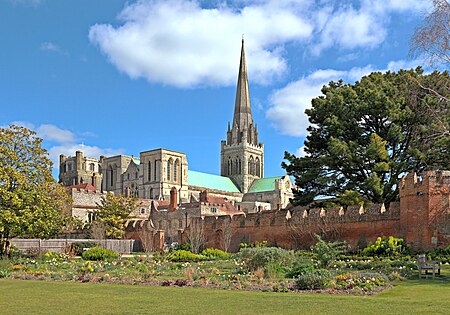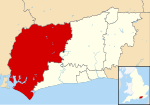Chichester Cathedral

Chichester Cathedral, formally known as the Cathedral Church of the Holy Trinity, is the seat of the Anglican Bishop of Chichester. It is located in Chichester, in West Sussex, England. It was founded as a cathedral in 1075, when the seat of the bishop was moved from Selsey.Chichester Cathedral has fine architecture in both the Norman and the Gothic styles, and has been described by the architectural critic Ian Nairn as "the most typical English Cathedral". Despite this, Chichester has two architectural features that are unique among England's medieval cathedrals—a free-standing medieval bell tower (or campanile) and double aisles. The cathedral contains two rare medieval sculptures, and many modern art works including tapestries, stained glass and sculpture, many of these commissioned by Walter Hussey (Dean, 1955–1977).The city of Chichester, though it retains two main cross streets laid out by the Romans, has always been small enough for the city's entire population to fit inside the cathedral at once, causing Daniel Defoe to comment: I cannot say much of Chichester, in which, if six or seven good families were removed, there would not be much conversation, except what is to be found among the canons, and the dignitaries of the cathedral. The spire of Chichester Cathedral, rising above its green copper roof, is the third tallest in England and acts as a landmark for travellers. It is the only spire from a medieval English cathedral that is visible from the sea.
Excerpt from the Wikipedia article Chichester Cathedral (License: CC BY-SA 3.0, Authors, Images).Chichester Cathedral
St Richard's Walk, Chichester Chichester
Geographical coordinates (GPS) Address Website External links Nearby Places Show on map
Geographical coordinates (GPS)
| Latitude | Longitude |
|---|---|
| N 50.8363 ° | E -0.7808 ° |
Address
Chichester Cathedral (Cathedral Church of the Holy Trinity)
St Richard's Walk
PO19 1QA Chichester, Chichester
England, United Kingdom
Open on Google Maps











